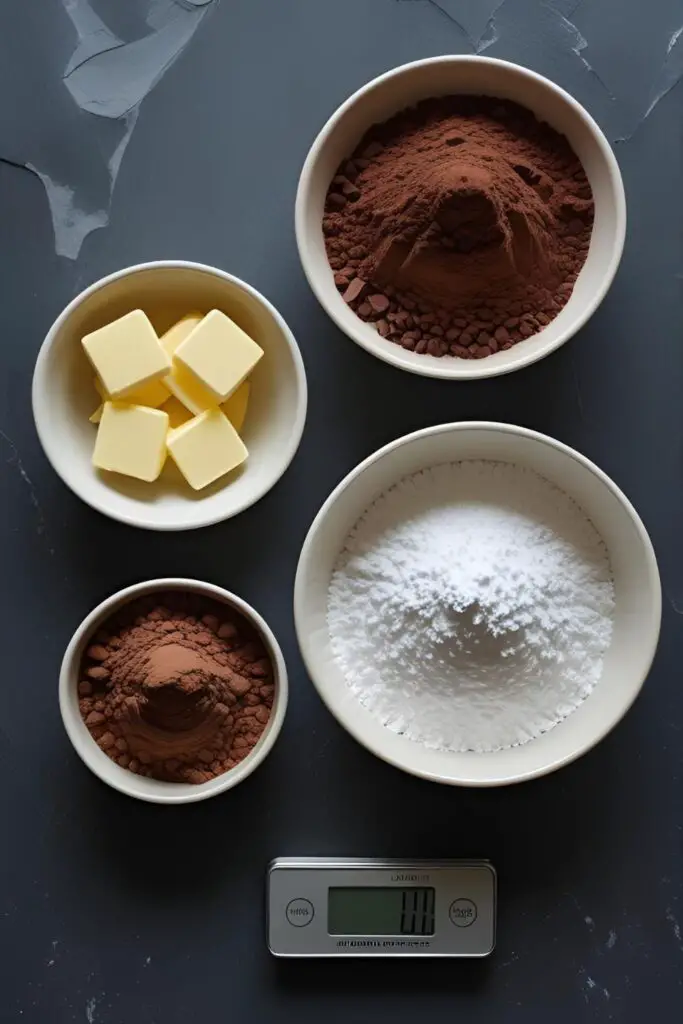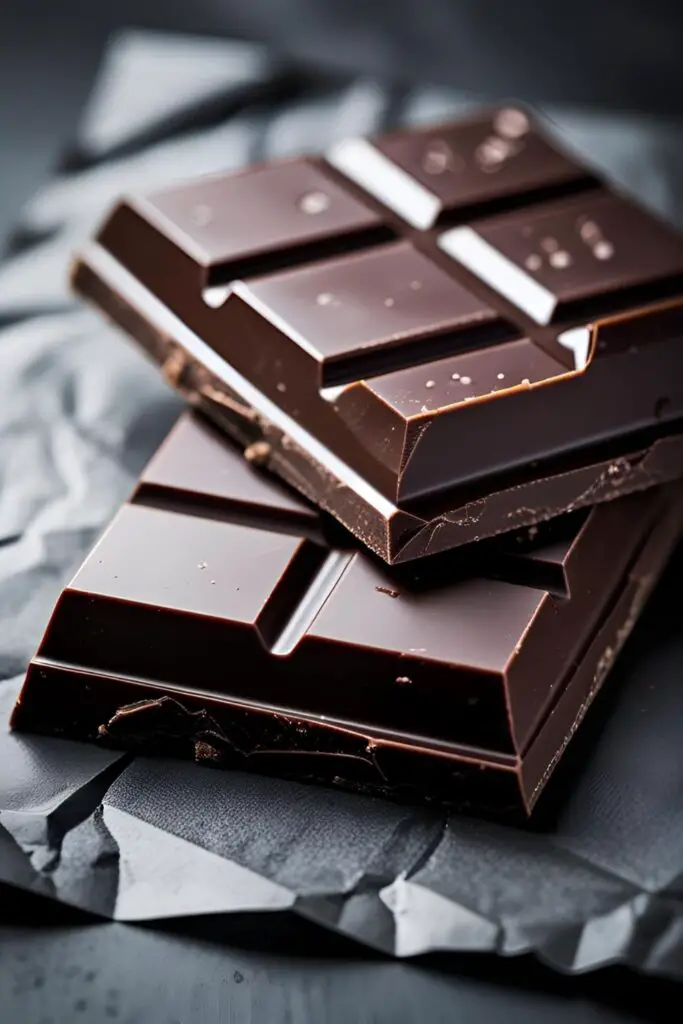How to Make Chocolate at Home (No, You Don’t Need a Factory)
Have you ever stood in the fancy chocolate aisle, stared at a $10 bar with ingredients like “single-origin cacao” and “hand-harvested sea salt,” and thought, “I could probably do this”? Then you imagine a sprawling factory with vats of molten chocolate, conveyor belts, and a team of musically inclined Oompa Loompas, and you abandon that thought immediately. Well, I’m here to tell you to grab your top hat and resurrect that dream.
This is your official guide on how to make chocolate at home. Now, let’s be clear. We are not going to be fermenting, roasting, and grinding cacao beans for three days straight. That’s a different level of unhinged, and frankly, you don’t have the industrial equipment for it. But we are going to take the core components of real chocolate—cocoa butter and cocoa powder—and transform them into a legitimate, delicious, and deeply impressive chocolate bar that you made with your own two hands. Prepare to feel like a culinary god.
Why This “Recipe” is a Power Move
So, why bother making your own chocolate when you can just buy it? Oh, let me count the ways.
First, you have 100% control over the ingredients. You decide the sweetness level, the darkness, the quality. Want to make it vegan? Done. Want to use a fancy maple syrup instead of sugar? Go for it. This is your chocolate empire, and you make the rules.
Second, it’s a genuinely fascinating food science experiment that you get to eat. You’ll gain a whole new appreciation for what goes into a real chocolate bar. And third, the bragging rights are off the charts. Casually mentioning, “Oh, I brought some chocolate I made from scratch,” at your next get-together is a power move of the highest order. They will look at you with a mixture of awe and suspicion. It’s the best.
The Building Blocks of Your Chocolate Empire
This recipe is all about ratios and quality. Don’t skimp here. Precision is your friend.
- Food-Grade Cocoa Butter: 1/2 cup (100g). This is the non-negotiable star of the show. This is the pure, pale fat extracted from the cacao bean. It’s what gives chocolate its signature melt-in-your-mouth texture and snap. Make sure it’s food-grade, not the stuff meant for lotion.
- Unsweetened Cocoa Powder: 1/2 cup (60g), good quality. This provides the actual chocolate flavor. You can use natural or Dutch-processed. Dutch-processed will give you a darker, smoother, less acidic flavor.
- Sweetener: 1/4 to 1/2 cup (to taste). You have options:
- Powdered Sugar: For a classic, smooth result. You must sift it to avoid grittiness.
- Maple Syrup or Agave Nectar: For a refined-sugar-free option. These liquid sweeteners incorporate easily but can result in a slightly softer chocolate.
- Vanilla Extract: 1 teaspoon. It elevates and rounds out the chocolate flavor.
- Salt: A tiny pinch. It intensifies the chocolatey-ness.
- Soy Lecithin or Sunflower Lecithin (Optional): 1/2 teaspoon of liquid or powdered lecithin. This is the pro-level secret ingredient. It’s an emulsifier that helps the ingredients blend seamlessly, creating a smoother, more stable chocolate that’s less prone to separating. You can make chocolate without it, but it really improves the texture.
Your At-Home Chocolatier Toolkit
Precision is the name of the game. Having the right tools will make you feel like a real chocolatier.
- Digital Kitchen Scale: I am begging you. This is the most important tool for this recipe. Chocolate making is chemistry, and chemistry relies on precise measurements by weight, not volume.
- A Double Boiler (or a DIY version): A small saucepan with a heatproof bowl (glass or metal) that fits snugly on top without the bottom touching the water. This is for gentle, even melting.
- A Fine-Mesh Sieve or Sifter: Absolutely essential for sifting your cocoa powder and powdered sugar to eliminate any chance of a gritty final product.
- Silicone Spatula: For stirring and scraping down the bowl. Make sure it’s clean and BONE DRY.
- Silicone Chocolate Molds: Bar-shaped molds are classic, but you can use any silicone mold you like—even clean ice cube trays will work in a pinch.
- Instant-Read Thermometer (Optional): If you want to get really nerdy about it, a thermometer helps you monitor the temperature to prevent overheating the cocoa butter.
The Creation Process: A Step-by-Step Guide
Alright, put on your lab coat. It’s time to make some chocolate.
Step 1: The “Mise en Place” (Get Your Stuff in Order)
This is a recipe where you need everything ready to go before you start. Use your kitchen scale to weigh your cocoa butter and cocoa powder precisely. If you are using powdered sugar, sift it along with the cocoa powder and salt into a small bowl. This is non-negotiable for a smooth texture.
Step 2: The Meltdown
Set up your double boiler. Add about an inch of water to the saucepan and bring it to a bare simmer over low heat. Place your measured cocoa butter into the dry, heatproof bowl and set it over the saucepan.
Let the cocoa butter melt gently and completely. Low and slow is the key. You don’t want to overheat it. If you’re using a thermometer, aim for a temperature no higher than 120°F(48°C).
Step 3: The Grand Unification
Once the cocoa butter is fully melted, remove the bowl from the heat. Immediately add your sifted dry ingredients (cocoa powder, powdered sugar, salt) to the melted butter. If you’re using a liquid sweetener like maple syrup, add it now.
Whisk everything together vigorously. Your goal is to dissolve the sugar completely and create a smooth, glossy, homogenous mixture. This may take a minute or two of constant whisking. Scrape down the sides with your spatula. If you’re using lecithin, whisk it in now.
Step 4: The Cool Down
Let the chocolate mixture cool down slightly for a few minutes, stirring occasionally. You don’t want to pour scorching hot liquid into your molds. This brief cooling period helps it set up better.
Step 5: The Pour and The Set
Carefully pour your liquid chocolate into your silicone molds. Gently tap the molds on the countertop a few times to release any air bubbles.
Now, place the filled molds in the refrigerator for at least 1-2 hours, or until the chocolate is completely firm and solid. Once set, it should pop out of the silicone molds easily.
Product Specs: A Nutritional Analysis
A look at the data sheet for your delicious creation.
- Serving Size: 1 ounce (about 28g)
- Estimated Calories: ~160 kcal for a 70% dark chocolate version
- Cocoa Solids: You decide!
- Awesomeness Factor: 100%
- Note: Rich in antioxidants and bragging rights.
Failed Experiments: Common Mistakes to Avoid
- Gritty, Grainy Chocolate: You didn’t sift your powdered sugar and cocoa powder, or the sugar didn’t fully dissolve in the cocoa butter. The Fix: Sift, sift, sift! And make sure you whisk vigorously until the mixture is smooth before you cool it.
- The Dreaded Seizure: Your chocolate turned into a thick, clumpy paste. The Fix: You let water get into it. A single drop of water is catastrophic. Be maniacal about keeping your tools and workspace dry.
- A Soft, Waxy Bar That Won’t Set: Your ingredient ratios were off. The Fix: Use a digital kitchen scale. This is a recipe of percentages. Measuring by volume (cups) is too inaccurate and can lead to a soft, waxy texture if there’s not enough cocoa solid to fat.
- A Dull or Streaky Finish: This is called “bloom,” where the fat or sugar separates slightly upon cooling. The Fix: This happens from improper cooling. While we aren’t doing a full temper, letting the chocolate cool slightly before pouring and setting it in the fridge helps minimize this. Don’t worry, it’s still perfectly edible!
The Flavor Lab: Fun Customizations
Now that you’ve made a base chocolate, it’s time to play mad scientist.
- The “Crunch” Factor: Before pouring your chocolate, sprinkle the bottom of your molds with toasted chopped almonds, puffed rice cereal, cacao nibs, or flaky sea salt. Then pour the chocolate over top.
- The “Spicy” Experiment: Whisk a pinch of cayenne pepper, smoked paprika, or cinnamon into your dry ingredients for a Mexican-inspired hot chocolate bar.
- The “Superfood” Edition: After pouring the chocolate into the molds, sprinkle the top with goji berries, hemp hearts, chia seeds, or dried blueberries before chilling.
Your Burning Questions for the Chocolatier
Is this “real” chocolate?
Yes! You are using the fundamental building blocks of chocolate: cocoa fat (cocoa butter) and cocoa solids (cocoa powder). You are, for all intents and purposes, a chocolatier. Put it on your resume.
What’s the difference between cocoa butter and coconut oil? Can I swap them?
Cocoa butter is the natural fat from the cacao bean and is solid at room temperature. It’s what gives chocolate its unique “snap” and melt-in-your-mouth quality. Coconut oil is a different type of fat that will create a much softer, more truffle-like consistency that will likely melt at room temperature. For a true chocolate bar, you cannot substitute the cocoa butter.
Do I need to “temper” this chocolate?
True tempering is a complex process of heating and cooling chocolate to precise temperatures to stabilize the crystals in the cocoa butter, resulting in a glossy finish and a sharp snap. For this simple homemade recipe, you do not need to do a full temper. The results will still be delicious. However, if you want to dive down that rabbit hole, the internet is full of guides!
Why does my homemade chocolate taste more bitter than a store-bought bar?
You have full control over the sweetness! If it’s too bitter, simply increase the amount of sweetener next time. Also, the type of cocoa powder you use (natural vs. Dutch-processed) will affect the final flavor.
How should I store my beautiful homemade chocolate?
Store it in an airtight container in a cool, dark, and dry place—like a pantry. Avoid the refrigerator, as it can cause condensation and sugar bloom. It should last for several weeks.
Can I make milk chocolate or white chocolate this way?
It’s more complicated. To make milk chocolate, you need to add full-fat milk powder to the mix. To make white chocolate, you omit the cocoa powder entirely and often use milk powder. Both are trickier to get smooth without specialized equipment. I’d recommend mastering dark chocolate first!
Where on earth do I buy food-grade cocoa butter?
You can find it online (Amazon is a great resource) or at specialty health food stores or baking supply shops. It often comes in wafers or a solid block.
Final Thoughts: Congratulations, You Mad Scientist
You’ve done it. You’ve unlocked a new level of DIY badassery. You’ve taken the essential elements of the earth and, through science and sheer will, created chocolate. The power!
Go forth and gift your creations. Watch your friends’ faces when you tell them you made the chocolate they’re eating. They might not believe you at first. But they’ll ask for more. Oh, they will always ask for more.




